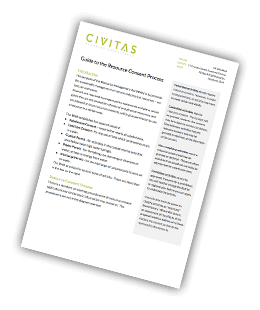Changes in Store for the Resource Consent Process
By Iain McManus
The Resource Legislation Amendment Bill (“Bill”) was introduced to Parliament in November 2015.
The purpose of the Bill is to introduce more efficiency to the Resource Management Act (“RMA”).
In this blog, we focus on three themes relating to the resource consent process, namely:
- reducing the need for resource consent for minor/trivial matters;
- reducing the processing timeframe for simple applications; and
- the notification process.
Exemptions for Minor / Trivial Matters
The Bill inserts new sections 87BA and 87BB into the RMA.
Boundary Infringements – s87BA
New section 87AAB creates a new type of activity called a “boundary activity”.
A boundary activity is an activity that requires a resource consent only because of the application of district rules that relate to the location or dimensions of a structure in relation to a boundary.
An activity is not a boundary activity if the affected boundary is a public boundary (e.g. road).
A boundary activity is permitted under section 87BA if:
(a) The applicant provides the consent authority with a description of the activity; a plan of the site; the full name and address of each owner/occupier of the site; and the full name and address of each owner/occupier of properties adjoining the affected boundary; and
(b) The owners and/or occupiers of properties adjoining affected boundaries provide their written approval to the proposed boundary infringement; and
(c) The consent authority notifies the applicant that the activity is a permitted activity.
If the proposed activity satisfies sub-sections (a) and (b) above, the consent authority must notify the applicant that the activity is a permitted activity, meaning no resource consent is required.
Permitted Activities – s87BB
New section 87BB provides the consent authority with the discretion to determine that an activity is permitted if:
(a) The activity would be permitted were it not for a marginal or temporary non-compliance with requirements, conditions, and permissions specified in the Act, regulations, a plan or proposed plan; and
(b) Any adverse effects from the proposed activity are no different in character, intensity, or scale than they would be in absence of the infringement; and
(c) Any adverse effects of the activity on a person are less than minor.
Where a person submits an application that is determined to be a permitted activity, the consent authority need not process the application further, consider or decide on it.
Reduced Timeframes for Simple Applications
The proposed legislation introduces greater proportionality into the process of obtaining resource consents by introducing a 10-working-day time limit for determining simple applications (fast track applications).
An application is a fast track application if the application is for one (or both) of the following:
(a) A controlled activity (other than the subdivision of land).
(b) An activity prescribed (“prescribed activity”) on the basis of regulation made by Order in Council on the recommendation of the Minister.
It is not yet clear how wide the category of prescribed activities will be, but we anticipate they are likely to be limited to simple applications (e.g. single infringements).
A fast track application must include an electronic address for service and will cease to be a fast track application if it is notified or if a hearing is held for the application.
Changes to the Notification Process
The Bill proposes to refine the notification regime. The proposed changes add a degree of complexity to the notification assessment process but seem likely to reduce the risk of notification for many applications.
Public Notification – S95A
Of note, the Bill proposes that:
- The following activities must not be publicly notified unless “special circumstances” exist:
- In determining the level of effects of an application, a consent authority may disregard an adverse effect if, when considered in the context of the relevant plan or proposed plan, it “is already taken into account by the objectives and policies of that plan.”
It is our opinion that the latter provision will be challenging to apply in practice and is likely to lead to significant uncertainty for applicants and debate between Council and applicants.
Limited Notification – S95B
Of note, the Bill proposes that:
- Controlled activities (other than subdivision) and prescribed activities must not be limited notified unless “special circumstances” exist.
- For consents issued by a district council, only eligible persons may be considered (potentially) affected for the purposes of limited notification.
- For boundary activities, the only eligible persons are the owners and occupiers of any allotment adjoining the boundary along which the infringement occurs.
- For most other applications (excluding subdivisions and non-complying activity applications), the only eligible persons are the owners or occupiers of adjacent allotments.
In addition to the above changes, the Bill introduces:
- A definition of “adjacent” that is narrower than applied through current case law, for use in determining eligible persons.
- Additional requirements to notify particular iwi interests.
Summary
The proposed changes represent a significant shake up of the resource consent process and, depending on how councils apply the provisions, seem likely to reduce the number of resource consents required, the number of those consents that are notified, and the time it takes to process some of the simpler applications.
On the face of it, while these reforms increase the complexity of the assessment process, they should also improve the efficiency of the process, albeit at the cost of community input into the process.

